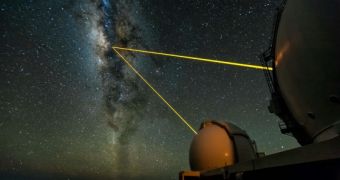As with all astronomical concepts and observed bodies, black holes have many scientists studying them, but that only means they have plenty surprises left. In fact, the supermassive black hole at the center of our galaxy just offered a new one, and it's big.
And by big, we mean that literally. The surprise is big on the scale of stars, since it is, in fact, that very thing: a star locked in orbit around the galactic core.
As far as orbits go, it is very fast. The star, called S0-102, completes a revolution in 11 years and a half, rather than the 60 years exhibited by all other stars near the Milky Way's center.
What does this mean for us, one may ask. On its own, the star would not be such a great find for anyone outside the astronomical community.
But that is just the thing: this star isn't alone there. It is the second one discovered to be so close and have such a fast orbit. The other one, S0-2, orbits the black hole in 16 years.
Together, the stars offer astronomers the bare minimum needed to figure out if Einstein was right about black holes warping time and space in their vicinity.
"It is the tango of S0-102 and S0-2 that will reveal the true geometry of space and time near a black hole for the first time," says lead researcher Andrea Ghez, who is also the director the UCLA Galactic Center Group. "This measurement cannot be done with one star alone […] The fact that we can find stars that are so close to the black hole is phenomenal."
Andrew Ghez has been observing the black hole since its discovery in 1998. The next step will be to look at the elliptical orbits of the stars and check for “wobbles” in them, when they are nearest to the black hole itself.
"This should not be a neighbourhood where stars feel particularly welcome," Ghez said. "But surprisingly, it seems that black holes are not as hostile to stars as was previously speculated."

 14 DAY TRIAL //
14 DAY TRIAL //